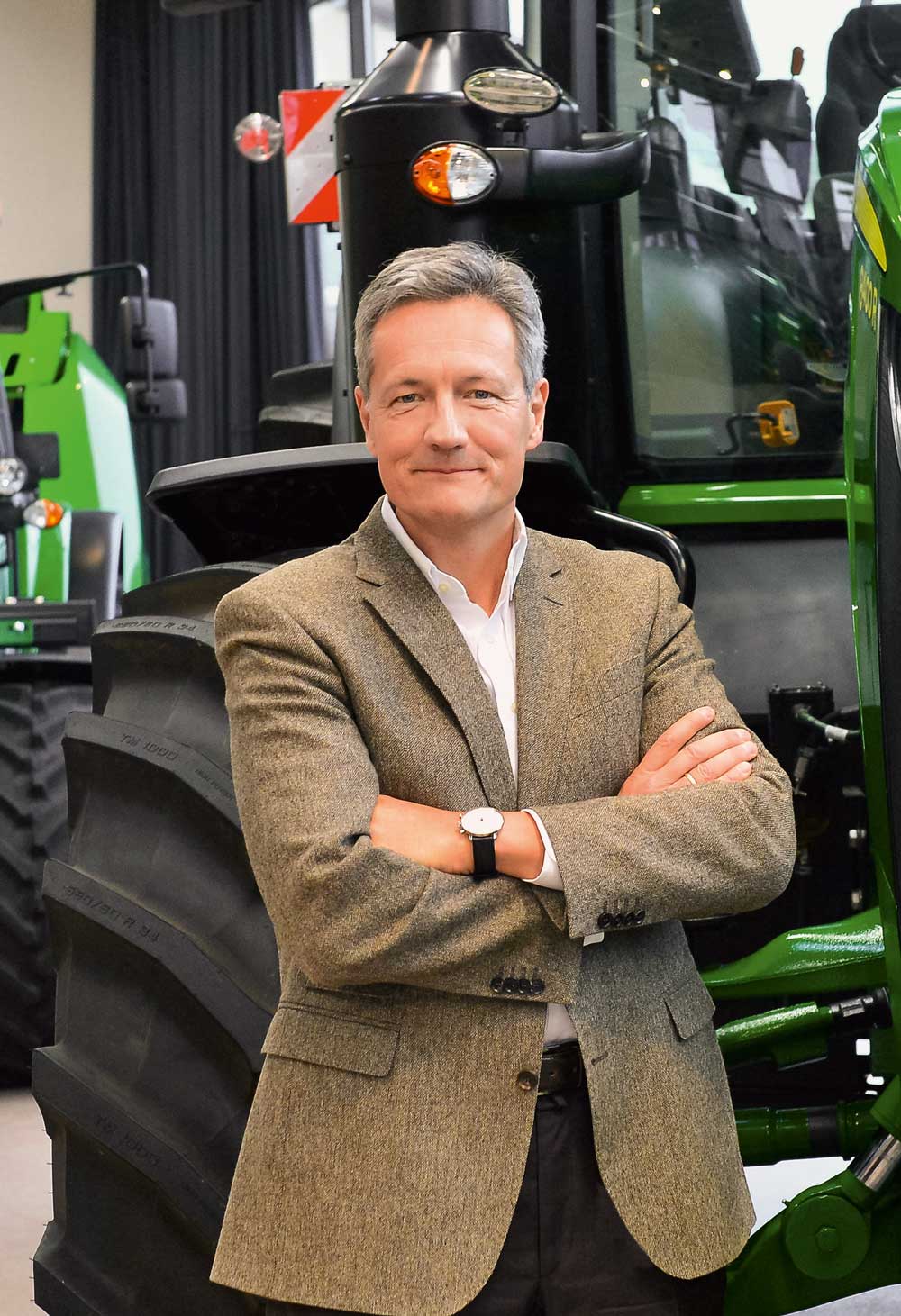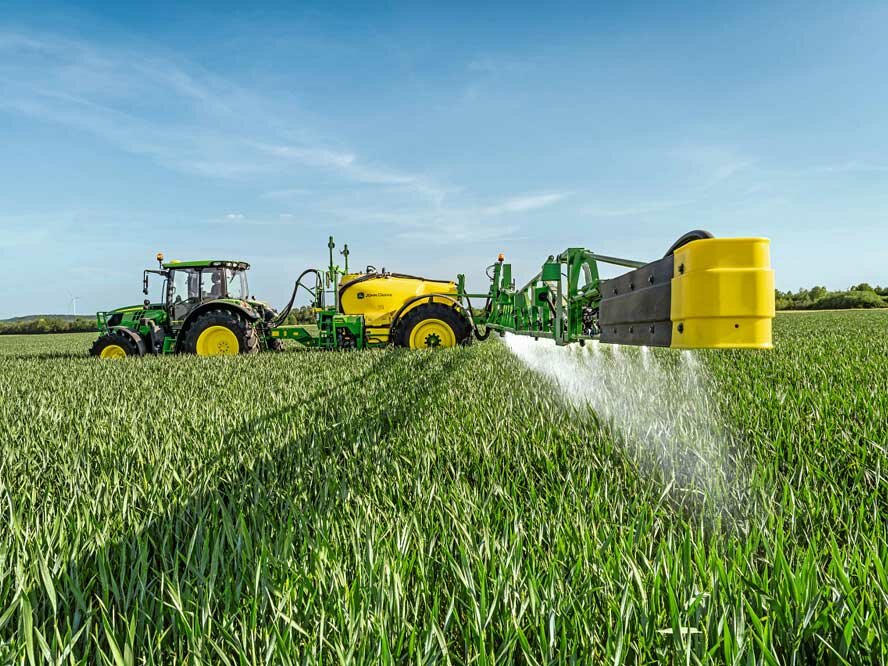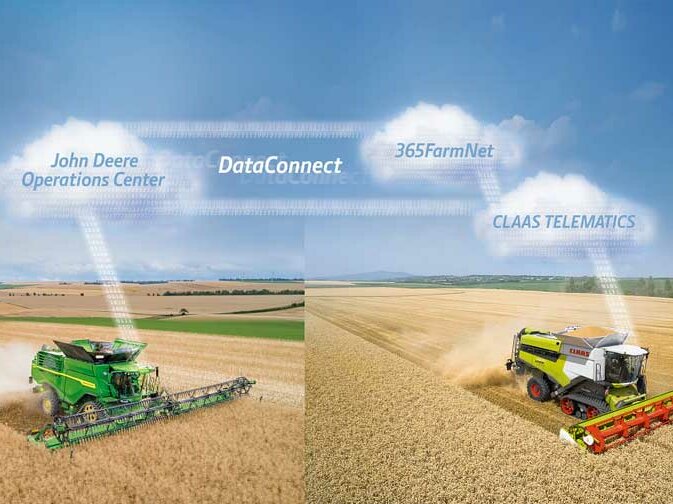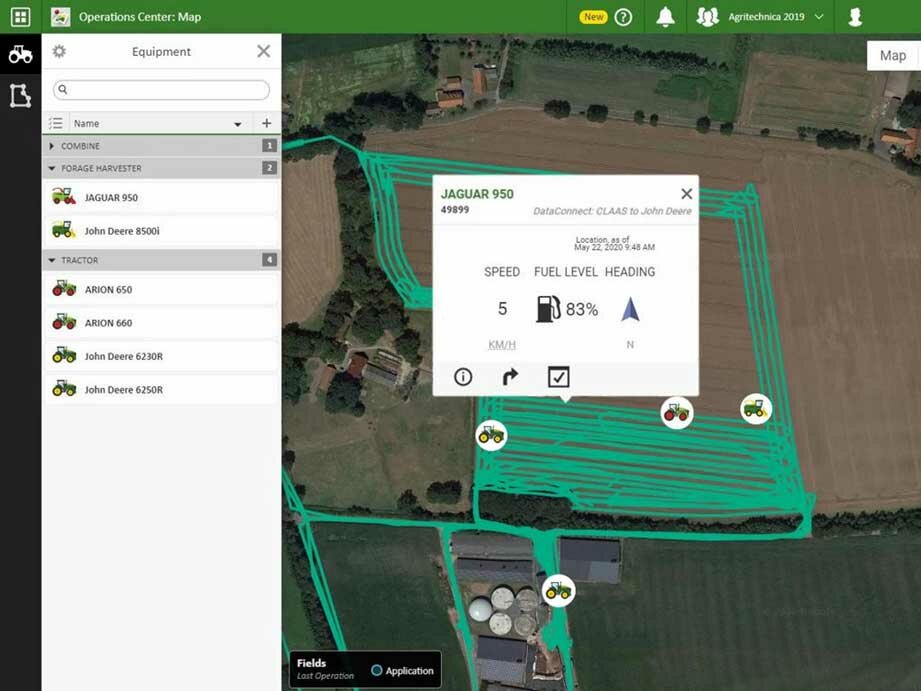Markwart von Pentz: "The digitisation picture is far from complete"
Interview by Thomas Preuße, DLG Mitteilungen
For as long as we have been talking about digitisation in agriculture, we have been complaining about the huge gap between wish and reality. We talk about Farming 4.0, but farms mostly stop at automatic control systems. John Deere President Markwart von Pentz sees the steps of digitisation as a jigsaw puzzle in which pieces are gradually added to fit exactly. He explains the way in which he wants to achieve a complete picture.
Mr von Pentz, what is the reason why farmers do not make better use of the opportunities offered by digitisation?
Perhaps it is helpful to first agree on terms. At John Deere, we divide the big puzzle of digitisation into three areas: Machine optimisation, job optimisation and agronomic optimisation. We need to build this puzzle systematically. Let's assume it has 300 pieces, 40 of which we have already put together with our solutions. Add to that another 160 pieces from partners who are already connected to the John Deere "operation centre". Then another 100 solutions from software vendors, consultancies, etc. are missing to make the whole picture.
The goal is to gain information from data and derive resilient decisions from it.
What do you already enjoy today?
Currently telemetry. For years, the sales partner's direct access to the machine for setting optimisation or remote diagnosis was not only a question of technology, but also of willingness. But during the Corona crisis, many machines would have been at a standstill if we had not consistently developed "connected support", as we call it. This would allow our sales partners to keep the machines running remotely via remote diagnostics and proactive service. We have seen demand double and triple within a few weeks. Digitisation sometimes needs a push.
It also took time with the automatic steering systems...
We have been offering them for almost 20 years, but only in the last few years they have been found on almost every new large machine. I can't give you a plausible reason for this either. Is it the demonstrable benefit of 10 % more efficiency? Is it convenience? Is it the dealers who are more committed to it? Probably a combination of everything. Sometimes, the time is just right. With the combine, the challenge is even greater to achieve both driver relief and higher utilisation with the installation and linkage of sensors. Steering systems and combine automation are prime examples of machine optimisation. We are already quite far along here.
What do you mean by job optimisation then?
That tractors and implements not only run, but they do their job properly. This is primarily about precision in the application of fertiliser, seed and crop protection products. In the right quantity, at the right place and at the best time. That is first and foremost a control task. Telemetry also plays a role here, for example when the sowing accuracy of maize is constantly checked via the cloud.
Job optimisation is not about which application rates or seed rates are appropriate in which situation. It is about the precise application itself. This can be special functions on the fertiliser spreader or the sprayer to maintain exact spacing. This goes all the way to pulse width modulation in crop protection, which keeps the application rate constant even when cornering or accelerating quickly. With the "see and spray" technology that we have purchased from Blue River, even selective crop protection targeting individual plants is possible. For this, a few percent of today's usual application rates are sufficient.
Is the impression correct that the gaps in agronomic optimisation are still the largest?
Yes, because the influencing factors are so diverse and so unstable. Here, for example, a planned quantity of a plant protection product should not only arrive at the target area without loss, but its quantity should be adapted to the circumstances, i.e. moisture, temperature, plant condition, etc., in such a way that the best possible result can be achieved with the least possible effort. In other words, what goes on in the farmer's head, only on a much larger data basis. Perhaps we have all set our expectations too high. Give us a few more years.
Up to now, digitisation was supposed to further increase yields. Today, however, farmers are coming up against limits due to the fertiliser ordinance. Does this change the goals of digitisation?
Definitely. The whole area of job optimisation is already geared towards "less, but more efficient". We are still used to assume less effort for the same output, but the future will probably require us to get by with less output for much less effort. This means, however, that the yield is no longer the target in arable farming, but that the monetary dimension plays a greater role. Our customers will think more and more in terms of entire production systems. Anyway, this is an Achilles' heel for the agricultural machinery industry: The possibilities for savings via machine costs are much smaller than for fertilisation and crop protection.
Is this why John Deere no longer just wants to sell machines, but to take care of the entire production chain?
Optimising production systems is one of the three building blocks with which John Deere wants to develop into a "Smart Industrial Company". We look at the economic and ecological impact of all measures and reduce what is unnecessary or inefficient. We offer solutions that not only optimise machine costs, but also identify savings opportunities throughout the entire production chain. We want to do this for grain, maize, soy, sugar and beyond to animal husbandry. In future, the customer will get everything from a single source.
Is that what the farmer wants? We still remember John Deere's failed attempt years ago to offer American tillage technology in Germany.
John Deere does not have to have everything in green and yellow in its own portfolio. The future platform economy will look like this: the customer will get everything from a single source, but this will be done through cooperation with external companies in the fields of crop protection, fertilisation, consulting, software, etc.
Why should a company give up its independence to make the John Deere strategy possible?
Already more than 160 companies have docked onto our "operation centre". The key word of the future is "networking". Walls are tumbling down in a way we would not have thought possible just a short time ago. Because we have already succeeded in developing an overarching and vendor-neutral cloud together with our competitor Claas, meaningful win-win cooperations should not be witchcraft. It's all a question of mutual trust.
What are the other two building blocks of your new strategy?
Technology solutions, for one. These include innovative hardware, automation, autonomous driving, electrification or artificial intelligence. The tools for this are innovative hardware, integrated software solutions, connectivity, data platforms and various applications. And secondly, we will offer "lifecycle" solutions. Customers want to know how high the costs are for the machine’s entire lifetime. We have already achieved a lot in recent years with diesel warranties or maintenance contracts.
What changes for John Deere, what changes for the customer?
For John Deere, this is one of the biggest reorganisations in 180 years of history. Through integrated services, open partner systems and networking, we offer customers the opportunity to combine resource conservation and environmental protection with the necessary profitability. Digitisation is an important building block in this.







